Geology
Type of resources
Available actions
Topics
Keywords
Contact for the resource
Provided by
Years
Formats
Representation types
Update frequencies
Service types
Scale
Resolution
-
This is a spatial dataset containing polygons representing different geology types in the Moor House National Nature Reserve, northern Pennines, England. The survey was undertaken by G.A.L. Johnson under a grant by The Nature Conservancy in the 1950s and 1960s. Full details about this dataset can be found at https://doi.org/10.5285/0e3aefb2-ce86-4d09-8ff0-6d165dfd48db
-
This dataset contains information about multiple palaeoecological proxies – pollen, non-pollen palynomorphs, spores, microcharcoal, plant macrofossils and macrocharcoal – generated from stand-scale (forest hollow-based) analyses of Cambusurich Wood Site of Special Scientific Interest, Scotland (Ordnance Survey grid reference: NN 62741 34679). The site’s chronology and loss-on-ignition (LOI) analyses are also provided. Full details about this dataset can be found at https://doi.org/10.5285/60952512-b682-4bd6-a609-365f64944fda
-
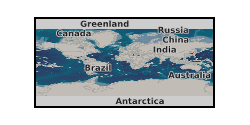
Direct geological observations made during field work, tied to positional information collected by hand-held GPS.
-
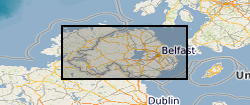
The 1:250k Geological Maps of Northern Ireland comprise the Superficial Deposits Map (Drift, 1991) and the Bedrock Map (Solid Geology, 1997). These maps identify landscape areas based on their lithology. The scale of the maps is 1:250 000 and provides a simplified interpretation of the geology that may be used as a guide at a regional level, but should not be relied on for local geology. Superficial deposits are younger geological deposits formed during the most recent geological time; the Quaternary. These deposits rest on older rocks or deposits referred to as bedrock. The superficial deposits theme defines landscape areas with a geological name and their deposit-type or lithological composition. The Superficial map shows the deposits within the extent of the six Counties of Northern Ireland. The Bedrock map comprises the bedrock geology and contains dykes and geological faults. Bedrock geology describes the main mass of solid rocks forming the earth's crust. Bedrock is present everywhere, whether exposed at surface in outcrops or concealed beneath superficial deposits or water bodies. Geological names are based on the lithostratigraphic or lithodemic hierarchy of the rocks. The lithostratigraphic scheme arranges rock bodies into units based on rock-type and geological time of formation. Where rock-types do not fit into the lithostratigraphic scheme, for example intrusive, deformed rocks subjected to heat and pressure resulting in new or changed rock types; then their classification is based on their rock-type or lithological composition. This assesses visible features such as texture, structure, mineralogy. Dykes defines small, narrow areas of a specific type of bedrock geology; that is igneous rocks which have been intruded into the landscape at a later date than the surrounding bedrock. Geological faults occur where a body of bedrock has been fractured and displaced by large scale processes affecting the earth's crust (tectonic forces). The Bedrock map shows the main bedrock geological divisions in Northern Ireland and coverage extends to the west into the Republic of Ireland. The printed map includes a stratigraphic column. Digital datasets have been derived from the maps and comprise three layers. 1. Superficial polygons, 2. Bedrock polygons and 3. Linear features. Attribute tables describe the polygon features. These data are generalised and superseded by the 1:10k Geological Maps of Northern Ireland.
-
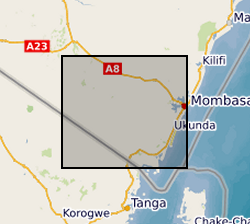
Geological observations during field walks, with coordinates, photographs and descriptions of rocks/geological materials and features at the various stops.
-
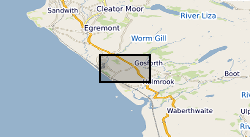
A collection of reference drawings relating to investigations carried out by Nirex, during the period from 1989 to 1997. The drawings summarise the status of the geological investigation at Sellafield and include borehole locations, geology (surface, structure, sections etc) and geophysics (seismic, airborne, etc). Sites near Sellafield, in Cumbria, and Dounreay, in Caithness. The Nirex (Nuclear Industry Radioactive Waste Executive) geological archive was transferred to the British Geological Survey during 2000/2001. The BGS has undertaken to retain the records for a minimum of 50 years as part of its national geological archive. The ownership of Nirex was transferred from the nuclear industry to the UK Government departments DEFRA and DTI in April 2005, and then to the UK's Nuclear Decommissioning Authority (NDA) in November 2006.
-

GeoIndex Historical Surveys This aeromagnetic survey was carried out by Canadian Aeroservices on behalf of the Northern Ireland Government in 1959 as part of a UK wide survey.
-

**Now superceded by CALM archives database**A brief finding list compiled in 1996/7 which derives its data from the earlier card and register lists. Earlier card indexes are still available at Keyworth. Virtually complete coverage of the archives of the Geological Society of London is included.
-
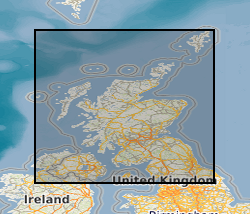
Miscellaneous geological records for Scotland and Northern England of current or semi-current interest filed in order of accession. Some 65 accessions held which will be subject to review for permanent retention/destruction. Dataset created c.1970 and Indexed on Land Survey Record Index Database.
-
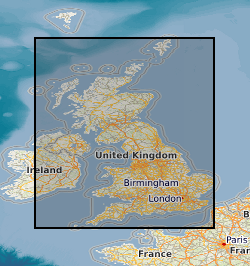
Records of all onshore (or near shore) boreholes, trial pits, shafts and wells held in the BGS archives in either paper, microfilm or digital format. The records range from simple single page lithological logs through to hydrocarbon completion reports. Spatial coverage will vary considerably depending on drilling activity, collecting activity and donations. The majority of new data is from site investigation reports with concentrations in urban areas and along transport routes. Current collection over 1million records covering the whole of Great Britain with 50,000 new records added per annum. Some records date back to 1600 but the majority date from 1900 onwards. Copies of records are available in hard copy or digital formats subject to confidentiality.
 NERC Data Catalogue Service
NERC Data Catalogue Service